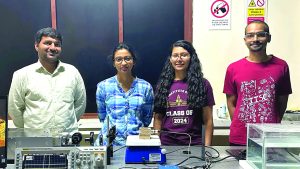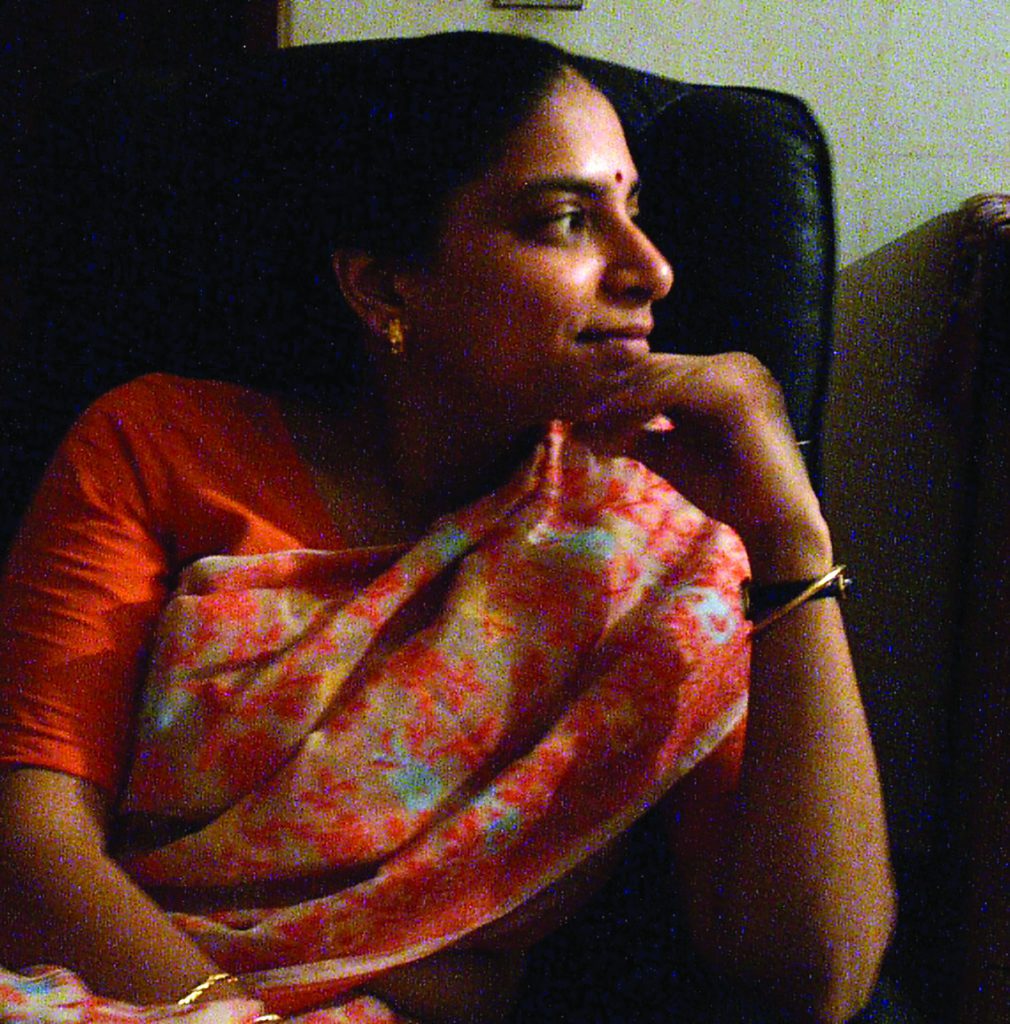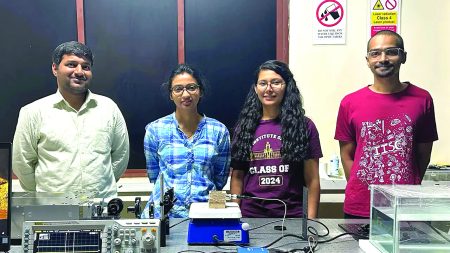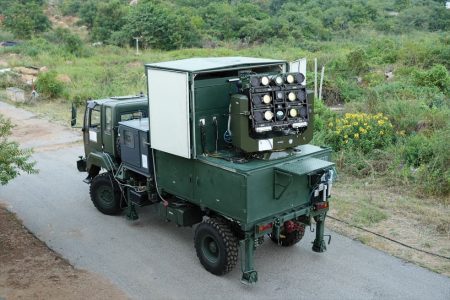Image Courtesy: Wikipedia
Dr Charusita Chakravarty remains an iconic figure in the landscape of Indian science, particularly in theoretical chemistry and chemical physics. Revered for her brilliance, intellectual integrity, and pioneering work, she stands as a beacon of inspiration for aspiring scientists, especially women, who strive to break through the often rigid and patriarchal frameworks of academia and scientific research.
Born on 5 May 1964 in Cambridge, Massachusetts, USA, Dr Chakravarty was the only child of the distinguished Indian economist Sukhamoy Chakravarty and his wife Lalita. Sukhamoy Chakravarty, along with Prasanta Chandra Mahalanobis, was a key architect of the Five-Year plans of India. Her early life was intellectually enriched, growing up in an environment where learning and critical thinking were deeply valued. As a child born in an academic family, she always had a lot of books around and read extensively and fairly indiscriminately. Her life was influenced greatly by her father.
ACADEMIC JOURNEY
After returning to India, her academic journey began to unfold in Delhi, where she excelled in school and was recognised early for her academic talents. Topping the Delhi Higher Secondary Board examinations, she went on to receive the National Science Talent Scholarship. Her academic prowess was further affirmed when she cleared the prestigious Joint Entrance Examination (JEE) of the Indian Institutes of Technology in 1982.
Despite securing a place in engineering, her passion for chemistry drew her to St Stephen’s College, Delhi University, where she graduated with a BSc in Chemistry, earning the coveted gold medal. Recognising her academic capabilities, she proceeded to Cambridge University to complete the rigorous Natural Science Tripos, further deepening her engagement with the fundamentals of science. By the time she went to Cambridge, it was reasonably clear to her that she wanted to do theoretical chemistry/chemical physics, not molecular biology.
Dr Chakravarty enjoyed the undergraduate experience in Cambridge very much. She mentioned in the book Lilavati’s Daughters (by Rohini Godbole and Ramakrishna Ramaswamy), “The effectiveness of being taught by individuals who were actively engaged in their subject made quite an impression on me-not just in theoretical and physical chemistry which in any case interested me, but also in subjects that I did not have to study or have not had to teach since then, such as synthetic organic chemistry”.
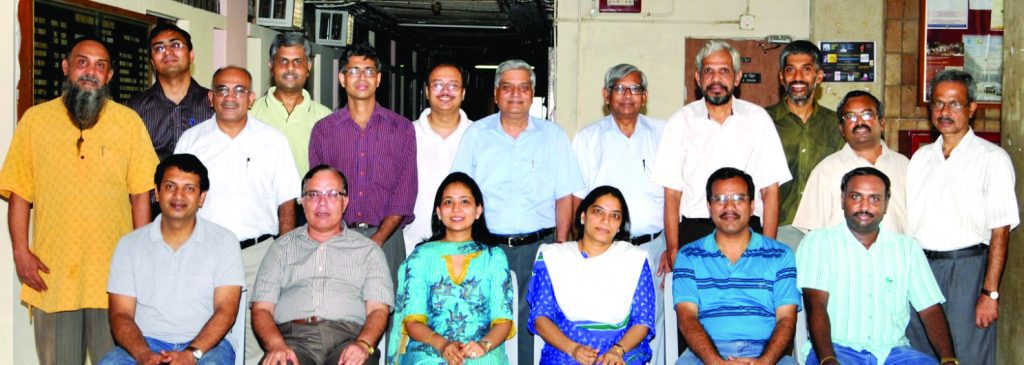

Image Courtesy: Internet
She chose to remain at Cambridge for a PhD in quantum scattering and spectroscopy under David Clary. Especially in combination with actual molecular beam and spectroscopic investigations, quantum scattering methods help to clarify gas-phase molecular reaction behaviour. By the time she finished her PhD in 1990, she knew she wanted to undertake more study on reactions in condensed phases, e.g. in solution and on solid surfaces, and this would need mastering statistical mechanics and computer simulation methods. Following her PhD, Dr Chakravarty pursued postdoctoral research at the University of California, Santa Barbara, with Professor Horia Metiu. Later, she held the position of Gulbenkian Junior Research Fellow at Trinity College, Cambridge, a prestigious appointment that demonstrated her growing recognition in the international scientific community.
In 1994, Dr Chakravarty returned to India. Unfortunately, many IITs hesitated to offer her a teaching position because she did not have a master’s degree, even though she had a PhD from Cambridge. Ultimately, she got offers from IIT Kanpur and IIT Delhi, of which she accepted the latter.
RESEARCH, ACCOLADES AND MENTORSHIP
Her association with IIT Delhi marked the beginning of an era where her contributions to research, mentorship, and academic leadership would leave a lasting impact. Climbing the academic ladder from Assistant Professor to full Professor by 2006, she dedicated over two decades of her life to the advancement of theoretical chemistry.
Her research was centered on understanding the microscopic properties of liquids through quantum and classical computer simulation methods. These methodologies allowed for insights into how liquids, especially water, behave at the atomic level. Among her most cited works were those that delved into the nature of hydrogen bonding in water and the complex, multiple time-scale behaviours associated with it. Her simulations of the hydrogen bond network and the dynamics of hydration shells around biomolecules like DNA helped bridge the gap between chemistry and biology, providing valuable insights for both the fields.
What made her work truly significant was not just its depth but also its interdisciplinary reach. Dr Chakravarty’s research spanned statistical mechanics, molecular dynamics, and condensed matter physics, often blending concepts from various domains to arrive at holistic and innovative interpretations. Her studies on nucleation and self-assembly processes have been influential in understanding the fundamental processes that underlie crystallisation and molecular organisation.
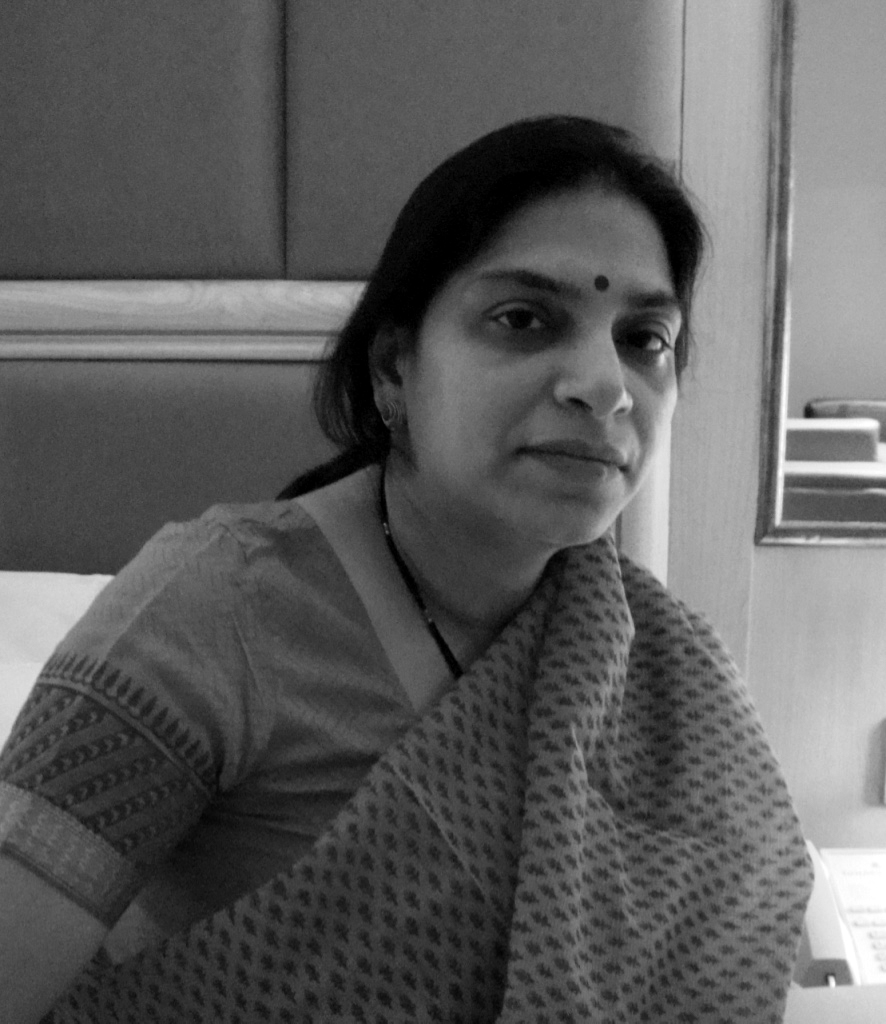

Recognition of her contributions came in the form of numerous accolades. She received the BM Birla Science Award in 1999 for her outstanding contributions to the field of chemical sciences. In 2004, she was awarded the Swarnajayanti Fellowship by the Department of Science and Technology, Government of India, which supports young scientists to pursue basic research in frontier areas of science and technology. Perhaps the most significant of her honours was the Shanti Swarup Bhatnagar Prize for Science and Technology in 2009—India’s highest science award—presented for her exceptional work in chemical sciences.
Beyond her personal achievements in research, Dr Chakravarty was known for her excellence in teaching and mentorship. Students and colleagues often remembered her as intellectually demanding but also deeply invested in their growth. Her classes were described as rigorous and engaging, and she fostered a culture of curiosity and analytical thinking. Her mentorship helped shape the careers of numerous young scientists who have gone on to make significant contributions in academia and industry.
GENDER EQUALITY IN SCIENCE
Another defining feature of Dr Chakravarty’s legacy was her staunch advocacy for gender equality in science. For most women in their late twenties and thirties, the difficulties of reconciling gender and professional responsibilities tend to be most pronounced. This is partially because these are the years when choices about marriage and children are made, but also because these are the years when one must prove one’s academic independence and viability. A woman in a male-dominated field, she did not shy away from discussing the systemic barriers that women scientists often face in India and globally. She was particularly vocal about the dual pressures of managing domestic responsibilities and professional excellence that women are expected to navigate. Rather than accepting these challenges as inevitable, she worked toward fostering an academic environment that acknowledged and supported diversity in all its forms.
In her essays and public lectures, she often discussed the need for institutional reforms to make science more inclusive and representative. She believed that a more diverse scientific community would not only be more just but also more innovative, as different perspectives are crucial for creative problem-solving. Her ability to speak truth to power, combined with her scientific excellence, made her a role model for many.
Dr Chakravarty’s contributions extended beyond research and teaching. She served on editorial boards of reputed journals and was an active member of various scientific societies. She contributed to shaping national science policies and participated in peer review committees, helping maintain the standards of scientific research in the country.
Her untimely passing in 2016 at the age of 52 was a great loss to the scientific community. Tributes poured in from across the world, recognising not just her intellectual achievements but also her integrity, wit, and passion for science. She was remembered as a polymath who read widely, wrote eloquently, and inspired those around her through both her intellect and humanity.
Dr Charusita Chakravarty was married to Professor Ramakrishna Ramaswamy, a distinguished physicist known for his contributions to nonlinear dynamics and complex systems. Professor Ramaswamy has held esteemed positions, including serving as the Vice Chancellor of the University of Hyderabad. Together, they had two children: a son, Rohan Ananda, and a daughter, Krithi Dakshina.
Dr Chakravarty’s legacy continues through the many scientists she mentored, the fields she advanced, and the institutional changes she advocated for. Her life exemplifies the power of curiosity, discipline, and courage. She showed that it is possible to be a world-class scientist and a committed advocate for change, and her story remains a vital chapter in the history of Indian science.
Today, as India and the world grapple with the need to make STEM fields more inclusive and responsive to social realities, Dr Charusita Chakravarty’s life and work offer both guidance and inspiration. Her story urges us to build academic cultures that recognise talent in all its diversity and to support young women scientists not just with words but with concrete structures of opportunity and equity.
Indeed, the best way to honour her memory is to ensure that the next generation of scientists, regardless of gender, background, or social standing, finds in the world of science a place where their curiosity is nurtured, their work is respected, and their voices are heard. Dr. Chakravarty believed in a science that is not only intellectually rigorous but also socially conscious. Her life is a testament to that belief, and her legacy is a clarion call to carry that vision forward.
*The writer is the Dean-Academic Affairs, Garden City University, and an adjunct faculty at the National Institute of Advanced Studies, Bangalore. He can be reached at bijudharmapalan@gmail.com.


